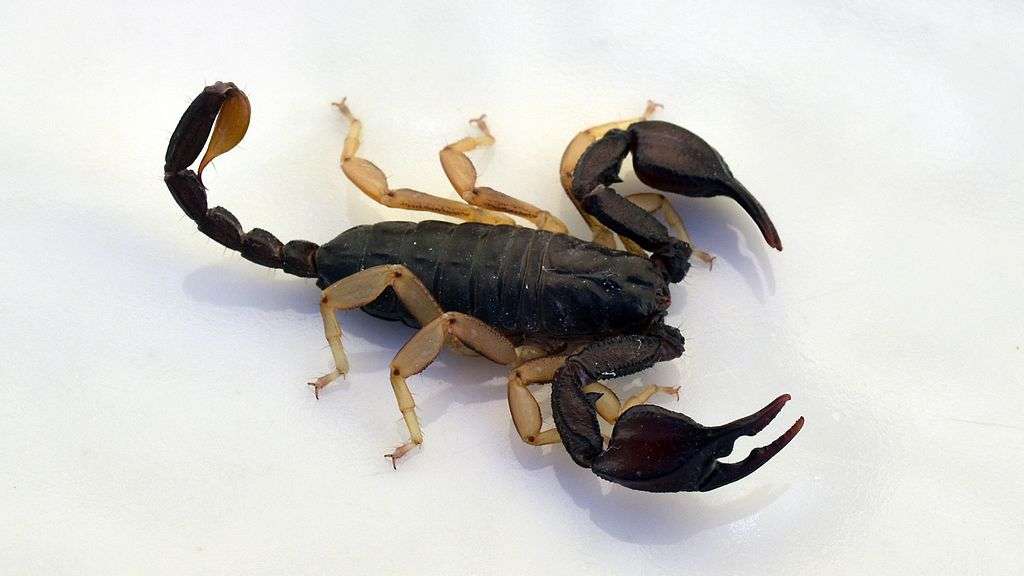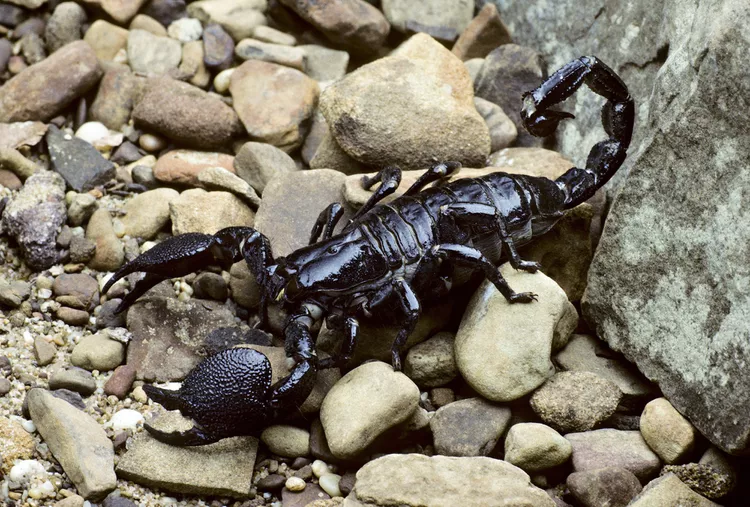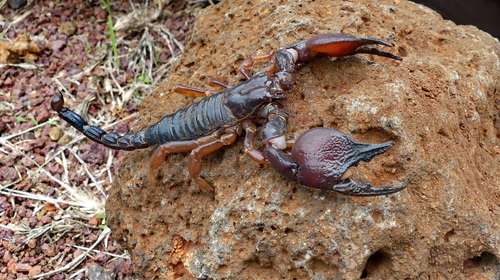
Description
Scientific Name: Euscorpius flavicaudus
A species of scorpion known as Euscorpius flavicaudus can be found throughout Southern Europe and Northwest Africa. The European Yellow-Tailed Scorpion is another name for them.
The scorpion has a black body that is separated into two primary halves. The abdomen and cephalothorax are these. The abdomen is further separated, with a sizable portion that makes up the tail included. The “tail” is also separated into four or five pieces, with a stinger at the very tip. Two claws are utilized for fighting and mating rituals, and there are four pairs of legs with yellow and black stripes. Small hairs that serve as sensing apparatus cover the majority of the scorpion’s body. Almost all other species of scorpions share characteristics with Euscorpius flavicaudis, however it stands out because of its minuscule size.
Habitat
Euscorpius flavicaudis is primarily distributed in Europe, at areas with an elevation below 500 m. Krems in Austria is where it is distributed the farthest north. North Africa is where it is distributed the most to the south. The Euscorpius flavicaudis lives in dark, dry places like cracks and fissures.

Behavior
The nocturnal Euscorpius flavicaudis emerges from the safety of its hiding location at dusk, with peak activity following shortly after.
Studies have revealed that scorpions can exist in one of three different states: moving, alert but immobile, or fully unalert. By posture, these states can be distinguished. The alert scorpion is stationary but has extended pedipalps, open claws, and an elevated body. The complete opposite happens during a non-alert stage. Euscorpius flavicaudis is observed in this unconcerned position in the extreme back of its hiding place during the daylight hours. The scorpion shifts to the front of its crack as night falls and becomes more vigilant.
Scorpions are vicious hunters. They wait for their prey to pass by as they sit at the entrance to their crack. The hairs on the pedipalps are used to identify approaching prey. This species of scorpion hardly ever uses its sting, instead immobilizing prey with its claws. The scorpion returns to its crack to prepare its supper when the prey item has died. Eaten headfirst is the prey. Although most scorpions only eat once a night, if the night is still young they may return to the entrance of the crack. At first light of morning, scorpions that were unsuccessful in finding a food will withdraw back into their crevices. Euscorpius flavicaudis may go for extended periods of time without eating.
As Pet
Since it is so calm, Euscorpius flavicaudus is frequently suggested for novices. Rarely does it attack its owner. Additionally, they don’t burrow as frequently as other species do, which facilitates observation.
Make careful to give it a small water dish if you intend to keep this species. Due to its diminutive size, this species is susceptible to drowning in a deep dish of water. To keep it from drowning, you can also put pebbles or stones in the water dish.
Other than that, the small size of E. flavicaudus makes it slightly more nimble. They do climb on occasion. In order to keep them from fleeing, don’t handle them.
Table





